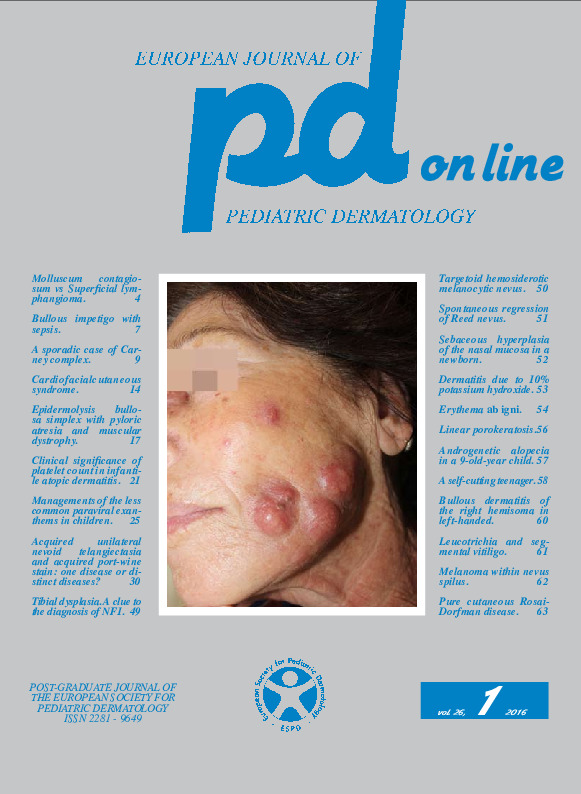Leucotrichia and segmental vitiligo.
Downloads
DOI:
https://doi.org/10.26326/2281-9649.26.1.1203How to Cite
Tagliavanti M., Bonifazi E. 2016. Leucotrichia and segmental vitiligo. Eur. J. Pediat. Dermatol. 26 (1): 61. 10.26326/2281-9649.26.1.1203.
pp. 61
Abstract
Segmental vitiligo (SegV) is more common in children than in adults: in the last 10 years among 255 cases of vitiligo in the first 12 years of age we registered 88 cases of SegV, 85 of systemic (SysV), 45 of isolated perinevic (PnV ) and 37 of focal vitiligo (FV); PnV was also present in 8/85 cases of SysV, in 4/88 of SegV and in 4 of 37 of FV. Leucotrichia, which is clearly visible when it hits terminal hair (2), was observed in 8 cases, 5 of which were of SegV. Leucotrichia is usually considered a poor prognostic factor; progression from SegV to SysV was shown in 26 out of 127 (20,4%) cases in a non pediatric population (1); the presence of leucotrichia is - along with halo nevi and skin involvement more than 1% - one of the factors associated to progression of vitiligo from Vseg to VSIS (1). Only 3/88 (3,4%) pediatric patients in our series passed from SegV to SysV in the first year from the onset of the disease.Keywords
Leucotrichia, Segmental vitiligo

